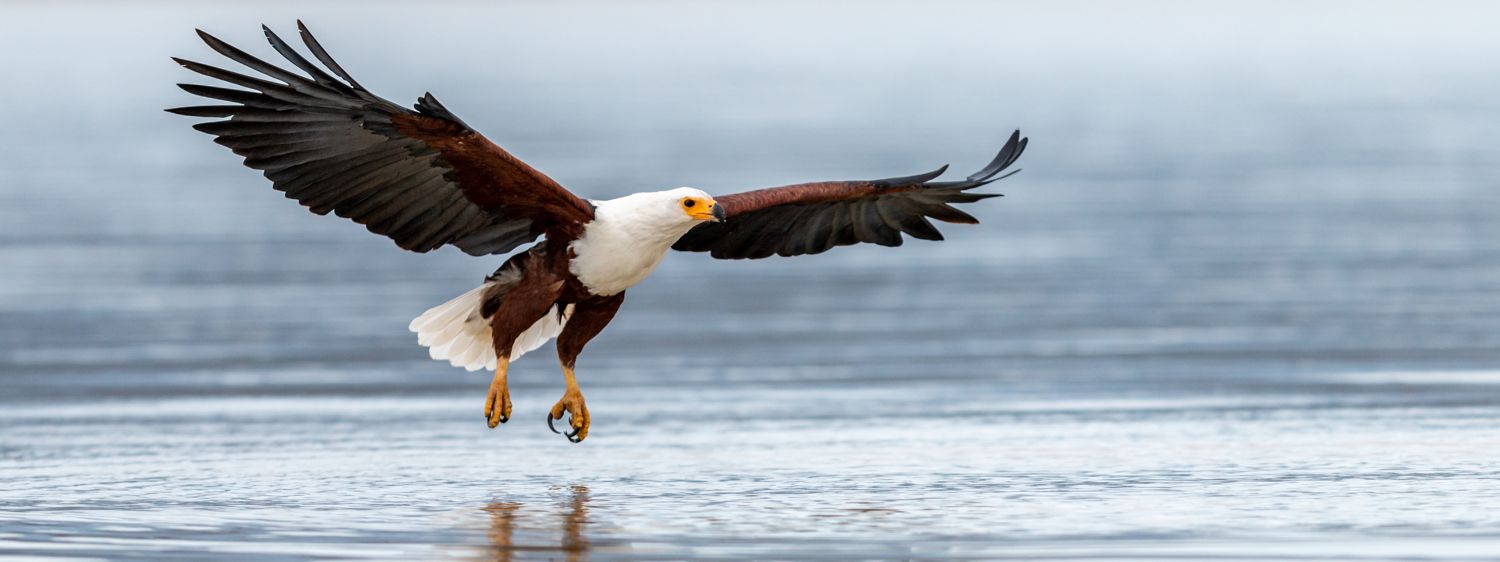Majestic and unmistakable, the African Fish Eagle (Haliaeetus vocifer) is one of Africa’s most iconic birds of prey. With its striking plumage—chestnut body, snow-white head and tail, and powerful yellow beak—it is instantly recognizable and often referred to as the "voice of Africa" due to its haunting, melodious call that echoes across lakes and rivers.
Behavior and Diet
True to its name, the African Fish Eagle is a skilled hunter, primarily feeding on fish. It uses its sharp talons and keen eyesight to snatch prey from the water’s surface in dramatic swoops. Though fish make up the bulk of its diet, it’s also known to feed opportunistically on birds, small mammals, and carrion. These eagles are typically solitary or found in pairs, fiercely territorial and often seen perched high in trees near water, surveying their domain.
Habitat and Range
This species thrives near large bodies of water—lakes, rivers, and coastal lagoons—where fish are abundant. It is widely distributed across sub-Saharan Africa, from Kenya and Uganda in the east to Namibia, Botswana, and South Africa in the south. Prime viewing locations include the Okavango Delta, Lake Malawi, the Zambezi River, and the shores of Lake Victoria.
Conservation and Cultural Significance
Fortunately, the African Fish Eagle is not currently endangered and enjoys a stable population across its range. It holds cultural significance in many African nations and is even featured on the national emblems of countries like Zambia and Zimbabwe.



